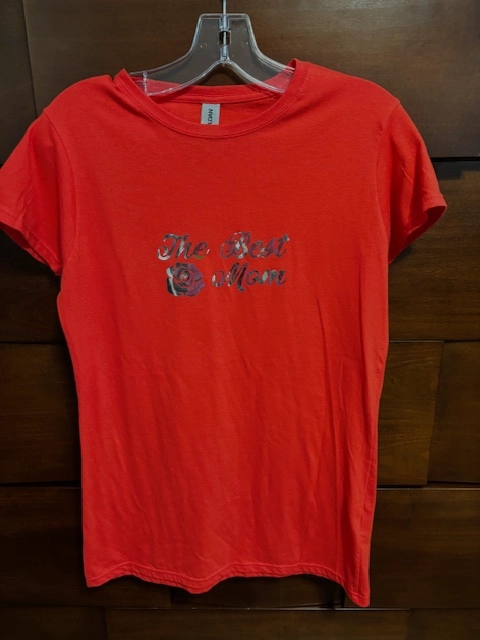Personalized Scrubs with Embroidery for an Expert Look
The Art of Custom-made Needlework: Unlocking the Tricks to Creating One-of-a-kind and Unforgettable Styles
Needlework, a craft soaked in custom and artistry, holds within its detailed stitches the power to transform textile right into a canvas of unique expression. The keys to creating customized embroidery layouts that astound the eye and leave a lasting perception hinge on a delicate balance of strategy, imagination, and attention to information. As we explore the globe of customized needlework, we discover the nuanced interplay between string option, stitch complexity, and design customization that elevates a plain garment to a work of art. Join us on a trip via the art of custom needlework as we decipher the secrets behind crafting genuinely extraordinary and distinct developments.
Choosing the Right Embroidery Threads
When selecting embroidery threads, what vital factors should you consider to guarantee the finest results for your custom styles? The option of needlework string is vital in figuring out the last end result of your stitched layout.
Additionally, the weight or thickness of the string plays a significant role in the appearance of the needlework. Thicker strings can include measurement and structure to your design, while finer strings are excellent for intricate details and little message. Additionally, considering the color fastness and washability of the string is crucial to make certain that your custom styles keep their top quality and vibrancy with time. By carefully reviewing these factors and selecting high-quality strings that meet your certain needs, you can improve the aesthetic charm and durability of your embroidered developments.
Exploring Various Stitch Techniques
To dive into the realm of 'Checking out Various Stitch Methods', one need to comprehend the details and subtleties that each stitching method gives the art of needlework. Various stitch techniques not just add visual passion however likewise add to the total appearance and measurement of the design. One preferred stitch technique is the satin stitch, which entails carefully stuffed parallel stitches to produce a smooth and glossy surface area, ideal for completing shapes and developing vibrant outlines.
On the various other hand, the backstitch is a flexible method often utilized for detailing and including great details. It includes sewing in reverse to develop a strong line of needlework. Furthermore, the French knot stitch includes a tactile component to designs, best for creating distinctive accents like flower facilities or ornamental touches.
Checking out various stitch techniques look at this website permits embroiderers to play with light, shadow, and depth within their designs, boosting the aesthetic allure and creative top quality of their embroidery tasks. By mastering various sewing approaches, one can open countless possibilities for developing distinct and remarkable personalized embroidery items.
Incorporating Personalized Design Elements
Having explored the details of different stitch techniques such as the satin stitch, backstitch, and French knot, the emphasis currently moves in the direction of including customized design components in custom-made embroidery tasks. Customized layout components play a vital function in making embroidery jobs really unique and unforgettable.
One more method to integrate customized style components is by including signs or motifs that hold unique significance to the recipient or mirror their interests and individuality. For example, incorporating a preferred flower, animal, or hobby-related sign can make the needlework style much more purposeful and customized. Additionally, selecting colors that resonate with the recipient or align with the designated style can additionally improve the personalization of the embroidery task.
Mastering the Art of Color Sychronisation

One key facet of shade control is understanding shade theory. This consists of knowing just how various shades interact with each various other, the emotions they communicate, view it now and how they can be incorporated to create visually appealing layouts. By applying shade concept principles, embroiderers can develop harmonious shade palettes that improve the overall look of the layout.
In addition, taking note of comparison is vital in shade control. Utilizing contrasting shades can aid particular elements of the layout pop, improve clarity, and create an aesthetically vibrant needlework piece. By understanding the art of shade control, embroiderers can raise their designs and create remarkable pieces that reverberate with customers and visitors alike.
Enhancing Texture With Advanced Needlework Stitches
French knots, as an example, are perfect for adding tiny, raised dots to your design, simulating the appearance of grains or developing a distinctive surface. Bullion knots, on the other hand, can be utilized to produce twisted, ropelike aspects that include a luxurious feel to the embroidery. Seed sewing entails little, scattered stitches that can complete locations with a polychromatic appearance, while turkey job develops fluffy, dimensional accents reminiscent of animal hair or vegetation. Explore these innovative embroidery stitches permits you to press the limits of conventional embroidery and create truly unique and aesthetically appealing appearances in tailor alterations your layouts.
Conclusion
Finally, the art of custom-made embroidery entails a mix of choosing the appropriate strings, discovering different stitch techniques, including individualized design components, mastering color control, and improving texture with innovative stitches. By understanding and applying these crucial elements, embroiderers can create one-of-a-kind and unforgettable layouts that showcase their creative thinking and skill. Needlework enthusiasts can open the secrets to producing beautiful and custom items that stand apart and leave a lasting perception.